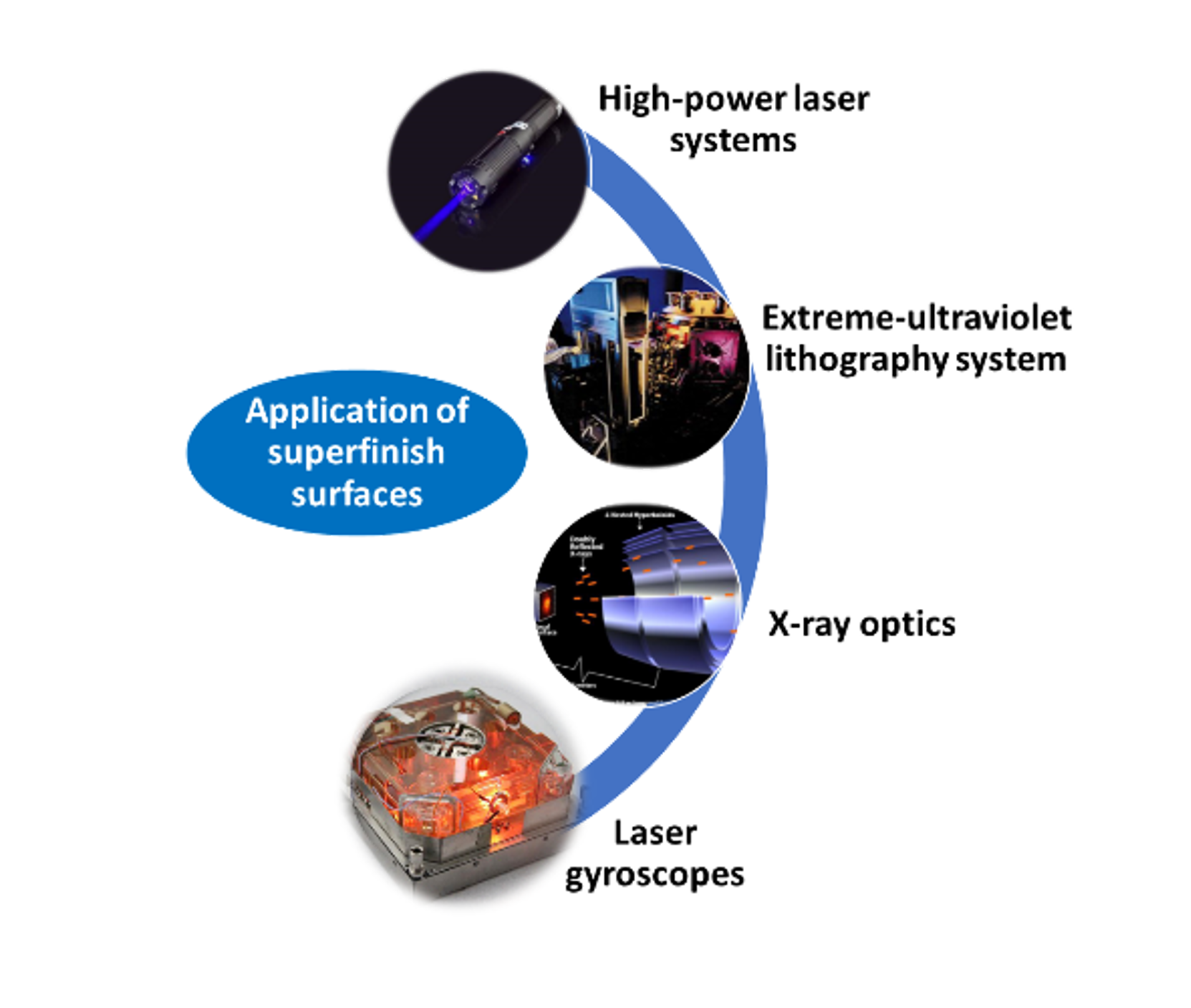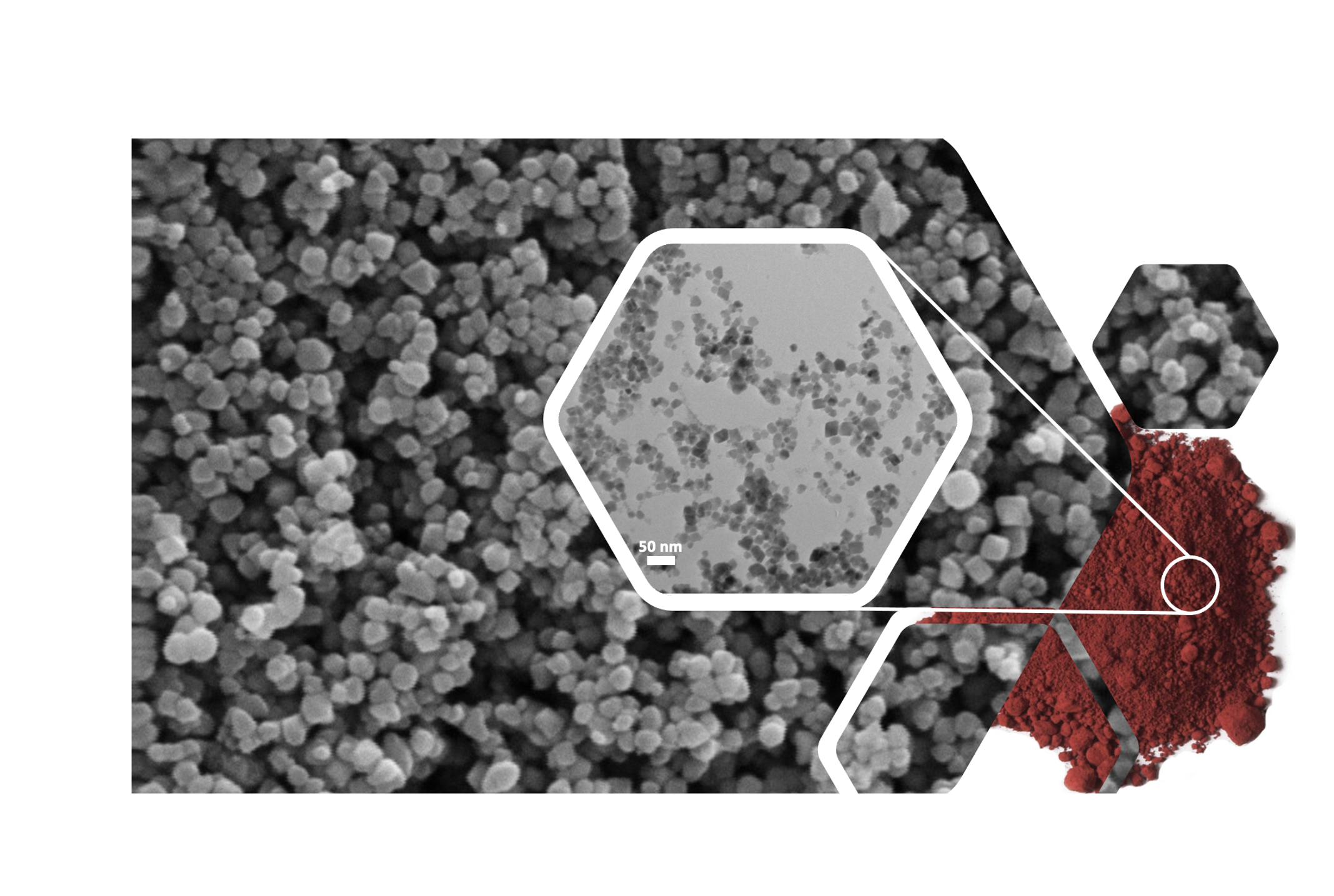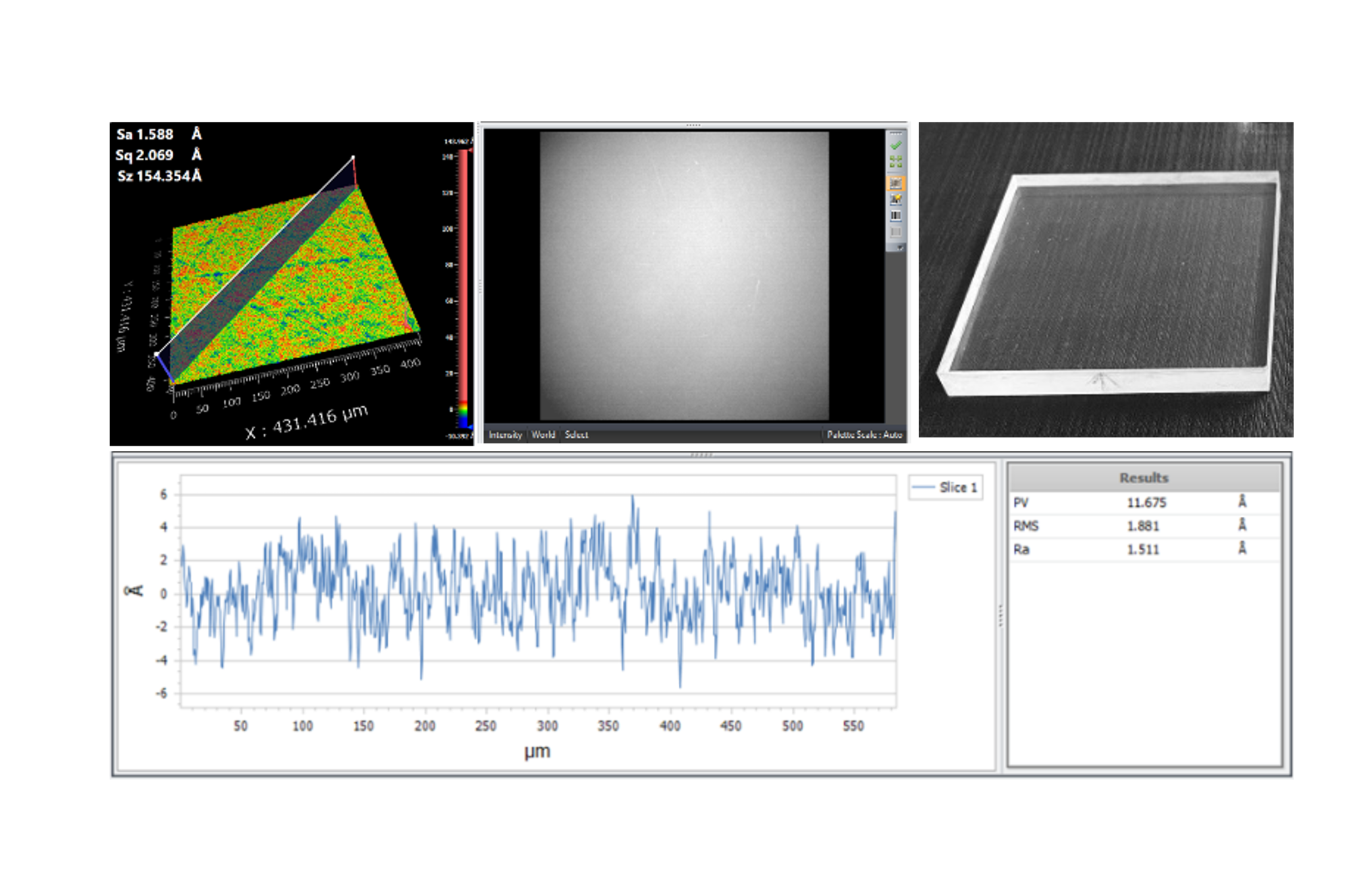Nano-Materials for Optical Engineering Applications
Prof. Gufran research group involved in developing superfinish optical substrate for high-power laser system using in-house developed SPION-based nano-abrasives. The research group has developed superfinish surface via novel polishing method up to the RMS value 1.5 Ångstrom on the low -OH containing laser grade glass like anhydrous fused silica glass. The pursuit of higher throughput and lower loss in laser systems has led to the development of optical components with ultra-low surface roughness, often referred to as "superpolished" optics. The process that achieves a remarkable root mean square (RMS) surface roughness of less than a few angstroms (10-10 m or Å) is known as superfinish optical polishing. Superfinish surface reduces the scattering to parts-per-million levels. These angstrom, low-loss surfaces represent a breakthrough in precision optics and are exceptionally well-suited for demanding laser applications, such as cavity ring-down systems and laser gyroscopes. Their contribution to enhancing the performance and accuracy of laser systems is undeniable, making them an invaluable asset in optics and photonics.

Nanoabrasives are developed to achieve surface roughness of the order of 2 Å. Such advancements are crucial for achieving optimal optical performance in a wide range of applications like high power laser systems, synchrotron optics, X ray optics, Extreme ultraviolet (EUV) optical systems.

A significant breakthrough in nanomaterial development has been achieved through the successful creation of Superparamagnetic Iron Oxide Nanoparticle (SPION) nanoabrasives, utilizing an efficient and cost-effective hydrothermal synthesis method. Extensive optimization efforts were dedicated to fine-tuning various parameters associated with the SPION-based nanoabrasive, with the ultimate goal of achieving superfinish polishing results with a remarkable RMS roughness of just 3 Å. Additionally, specialized functionalized nanoabrasives were engineered to further enhance the precision, successfully reducing surface roughness levels to an impressive 2 Å range. These advancements mark a significant stride in the field of nanomaterials and precision surface finishing.

The attainment of superfinish surfaces on low thermal expansion glasses, including anhydrous fused silica glass and laser grade glass, represents a significant achievement in precision optics. These surfaces boast an impressive roughness level of just 1.5 Å, demonstrating the exceptional precision and quality of the polishing process. Leveraging these superfinish surfaces, researchers successfully applied high-reflective dielectric mirror coatings, showcasing the practical applications and benefits of such precise optical surfaces. The superfinish polishing was executed using the specially developed Superparamagnetic Iron Oxide Nanoparticle (SPION)-based nanoabrasive in a conventional chemical mechanical polishing process, highlighting the versatility and effectiveness of this innovative approach in the realm of optical finishing.